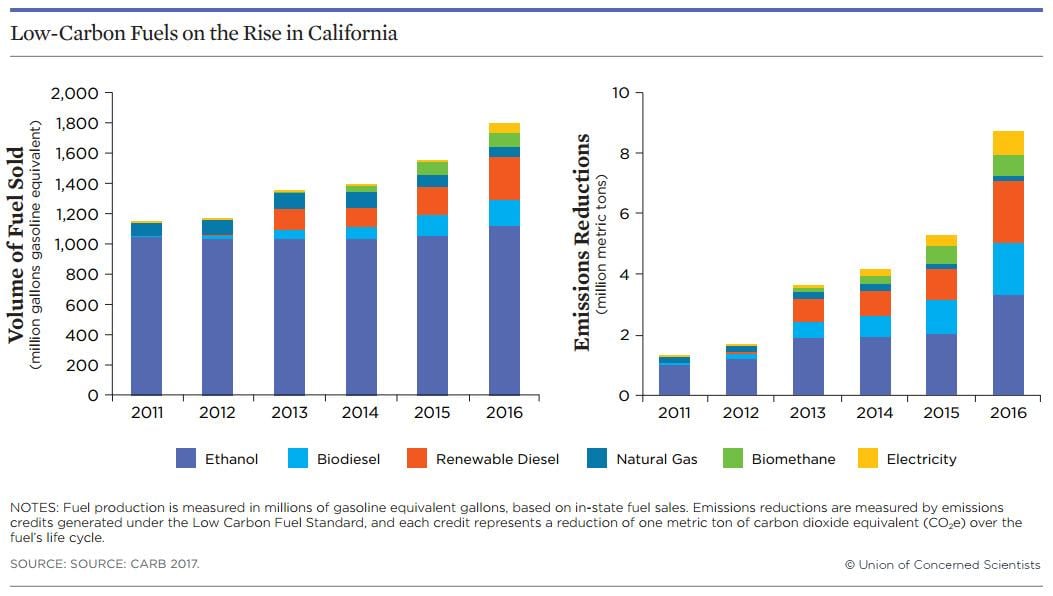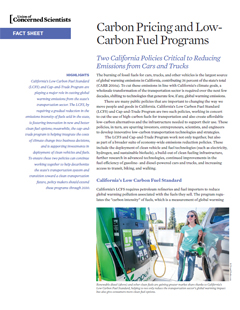In California—where transportation is the largest source of global warming pollution—several key policies are in place to gradually transform vehicles and the fuels they use, including the Low Carbon Fuel Standard (or LCFS) and California’s Cap-and-Trade Program.
The two policies complement one another by driving investment and innovation in vehicles, fuels, and infrastructure—and both policies are crucial for achieving California’s climate goals.

What’s the low carbon fuel standard?
Low carbon fuel standards work by requiring that vehicle fuels become cleaner over time. In California, the program regulates the “carbon intensity” of fuels, a measurement of the global warming emissions of a given fuel over its entire lifetime (including production, transportation, and combustion or use).
The standards cover all transportation fuels, including gasoline, hydrogen, and electricity; producers must meet the standard by selling sufficiently low-carbon fuel, or by purchasing credits earned by other sellers.
What’s the cap-and-trade program?
California’s Cap-and-Trade Program sets a collective limit (or “cap”) on carbon emissions from transportation and electricity generation, among other sectors. The cap declines by 3 percent every year; those subject to the cap must hold “allowances” for their emissions, and must either decrease their emissions over time or purchase allowances from others.
Unlike the LCFS, California’s Cap-and-Trade Program generates significant revenue, which can be used for various initiatives to reduce emissions, including transportation projects aimed at communities burdened by pollution from nearby refineries and roads.
How do they work together?
Like other forms of carbon pricing, cap-and-trade helps ensure that the costs of fossil fuels are better reflected in industry and consumer decisions. It’s an efficient, market-based method for lowering emissions and increasing clean energy investment.
However, a carbon price won’t decarbonize California’s transportation sector by itself. Current allowances are too inexpensive—and the oil market too unpredictable—to quickly spur the required innovation. That’s why the LCFS is so important: it directly limits heat-trapping emissions from fuel, ensuring there’s a market for low-carbon fuels, regardless of the price of gasoline.
Currently, both the LCFS and the Cap-and-Trade Program stop in 2020. Extending the LCFS and some form of carbon pricing to at least 2030 would provide the long-term stability needed for deep, significant cuts in California’s global warming pollution.




